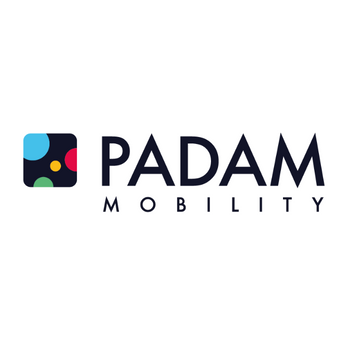Guest Article by Beate Kubitz for Padam Mobility
Beate Kubitz is a real insider of the transport sector. As an independent consultant and publicist on topics related to mobility and innovation, she is always on top of the latest facts when it comes to explaining the impact of new forms of mobility on society and politics.
Public transport demand is deeply linked to the availability of public transport. Where the network is poor and infrequent – often in rural and peri-urban areas – car ownership rises. In a vicious cycle, the increase in car use further reduces demand for public transport and makes services less viable.
What is less recognised is that this has an effect on both those areas with poor public transport, (the origins of most journeys) and their destinations – which are often in urban centres.

Dropping Demand, Falling Funding
Public transport in the UK faces a difficult future. Against a background of steady decline as the UK gradually turned to private car travel, the COVID-19 pandemic caused a sharp drop-off in ridership. The Bus Recovery Grant, intended to shore up the market, looks likely to be withdrawn before passenger numbers have fully recovered.
The issues facing public transport, while exacerbated by the pandemic, have been in the making for some time. For buses, deregulation has caused, or at the very least coincided with, a steady decline in usage. The focus on profitability has also meant that operators have pared their routes to those that are commercially viable, on busy corridors. It has become increasingly difficult for local authorities to maintain ‘socially important’ services connecting communities lying off these corridors.
Since 1986, local authorities outside London have been unable to set service routes and frequencies, or subsidise fares. The final say on where and how they will be delivered rests mainly in the hands of commercial operators. Local authorities have also suffered cuts to funding, meaning they cannot commission bus services to augment commercially viable routes.
This removal of control from local authorities has resulted in transport networks with patchy coverage in many areas, missed connections between transport networks, and long waiting times between services. It is not difficult to find examples of local journeys to key destinations which take two or three times as long by public transport.
Among the other factors affecting the uptake of public transport, are information and cost. On the positive side, the Bus Open Data Service is slowly opening access to timetable and fare information so that digital journey planners work effectively.
However, bus fares have risen at a rate far above inflation. Figures released by the Office for National Statistics in 2021 found bus fares were six times more expensive than they were in 1987. Attempts by authorities outside London to introduce integrated ticketing, emulating London’s Oyster card, have met with difficulties.
A further issue is the failure to integrate transport into new housing developments. A damning 2022 report by the campaign group Transport for New Homes examined 20 new-build estates, and found that the majority were planned in a way that “locked in” private car use. This in turn had an impact on the quality of housing, as more space had to be given over to parking.
Policy and practice are not strong in this area. The misallocation of funding obtained from developers as part of the planning process – and the granting of planning permission on the assumption that better public transport would somehow follow development – have been cited as causes of this type of car-centric development. The National Policy and Planning Framework cautions against applying maximum parking limits to new developments, despite the success of low and zero car development.
Coordinating Transport Policy, Planning Policy and Funding
In order to address the issues, there needs to be a step change in funding and policy.
First, public transport needs to be brought closer to more homes and destinations. In cities that have data on access to public transport, such as London and Manchester, higher accessibility correlates strongly with lower car ownership.
An important element to explore is how demand responsive transport (DRT) can be used to improve accessibility or network coverage. Whilst ‘dial-a-ride’ DRT schemes have been around for a while, more sophisticated platform-based DRT enables on-demand services to be accessible as part of the public transport network.
Active travel improvements can also play a role, by creating safer, more direct walking and cycling routes, with secure bike parking and e-bike charging at transport interchanges.
Local authorities need powers and funding to deliver improvements to public transport. Devolved powers in relation to transport should be increased. The obstacles to introducing bus franchising and enhanced partnerships should be removed, as there is no other way to ensure reasonable levels of service or integration with other transport networks. Areas that have already become “transport deserts” should be provided with DRT services that replicate the convenience of a good fixed route bus service.
The present funding landscape for public transport and active travel is full of potential stumbling blocks. For instance, methods of assessing benefit to cost ratios for public transport schemes are urgently in need of reform. Rapid transit networks are required to show unreasonably high BCRs, often based on pessimistic assumptions of future passenger numbers. The Borders Railway in Scotland was built in spite of estimates of just 30,000 then 650,000 passengers per year. The reality, in its first year of operation, was over a million.
Government tools such as WebTAG do not correctly value active travel, prioritising free movement of private vehicle traffic over convenient local journeys on bike and by foot. AMAT, the assessment tool for active travel schemes, is designed to favour schemes that can already show a high proportion of active travel users, which can increase transport inequality. As nearly all public transport journeys contain an element of active travel, defects with these assessment tools penalise public transport too.
Finally, planning regulations should be reassessed in light of the urgent need to decarbonise transport. This means that connectivity of new developments to existing transport networks should be ensured from the outset (rather than being left to be put in at a future date). More S.106 and CIL funding should be used for improvement and development of local transport services. Resources should also be allocated to “retro-fit” poorly connected existing developments, using DRT to ensure people can access frequent fixed route public transport easily.
We need a public transport network that reaches close to people’s homes and their ultimate destinations. This will require changes to transport policy and funding, and the exploitation of new innovations and proven methods to reduce car ownership. With less need for private vehicles, public transport will function better, and we will be able to use land for housing people rather than cars.
This article was originally published by Padam Mobility.





